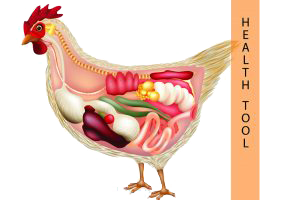Spotting avian influenza with infrared imaging

Your flock management computer indicates that your broilers may be infected with avian influenza. That sounds like something from the distant future. Scientists from Iran and the US have shown that it is possible to detect avian influenza and Newcastle disease with the use of thermal imaging and artificial intelligence before the onset of clinical signs.

Early detection of avian influenza in the poultry house is important to prevent the virus from spreading to other farms. The Iranian-American study is not the first to detect avian influenza based on camera imaging. For example, in 2017, Chinese scientists developed an algorithm to detect H5N2 in broiler chickens based on contours and information about the skeleton.
The Iranian and American researchers used thermal images to distinguish between sick and healthy animals. Sick animals have an abnormal body temperature. According to the scientists’ publication in the journal Animals, one of the methods they used can detect avian influenza 8 hours after infection, although the certainty is still less than 90%. However, they claim that the disease can be predicted with great accuracy within 24 hours.
Thermal images after infection
The researchers from Iran and the US conducted the experiment under laboratory conditions with 4 groups of 20 14-day-old Ross 308 broilers. One group was infected with Newcastle disease, one group with the low pathogenic H9N2 avian influenza virus, with the other groups as control groups. The broilers in each group were kept individually in cages, separated by mesh. Thermal images were taken every 8 hours in all groups, from 8 to 56 hours after infection. The camera was placed at a distance of 0.5 metres.
The researchers state that such images can be made in commercial poultry operations with mobile robot systems. The system used detects the early signs of an avian influenza infection based on just 3 thermal images per broiler in each 8-hour period. In the world of big data, huge amounts of data need to be analysed. However, the researchers in this study looked for statistical characteristics of the thermal images that can be filtered and selected. With predetermined formulas and the use of artificial intelligence, reliable results can be achieved.
Small-scale research
In the trial, 2 different artificial intelligence methods were used to process the thermal images. A third technique was used to combine the evidence from the first 2 methods. This method led to an accuracy of 97.2% for avian influenza and 100% for Newcastle disease.
The researchers acknowledge that their experiment was small-scale and that more research is needed. They also state that it was not their goal to develop a system that can be directly applied in day-to-day poultry farming. For now, identifying signs of avian influenza is still the responsibility of the flock manager.












